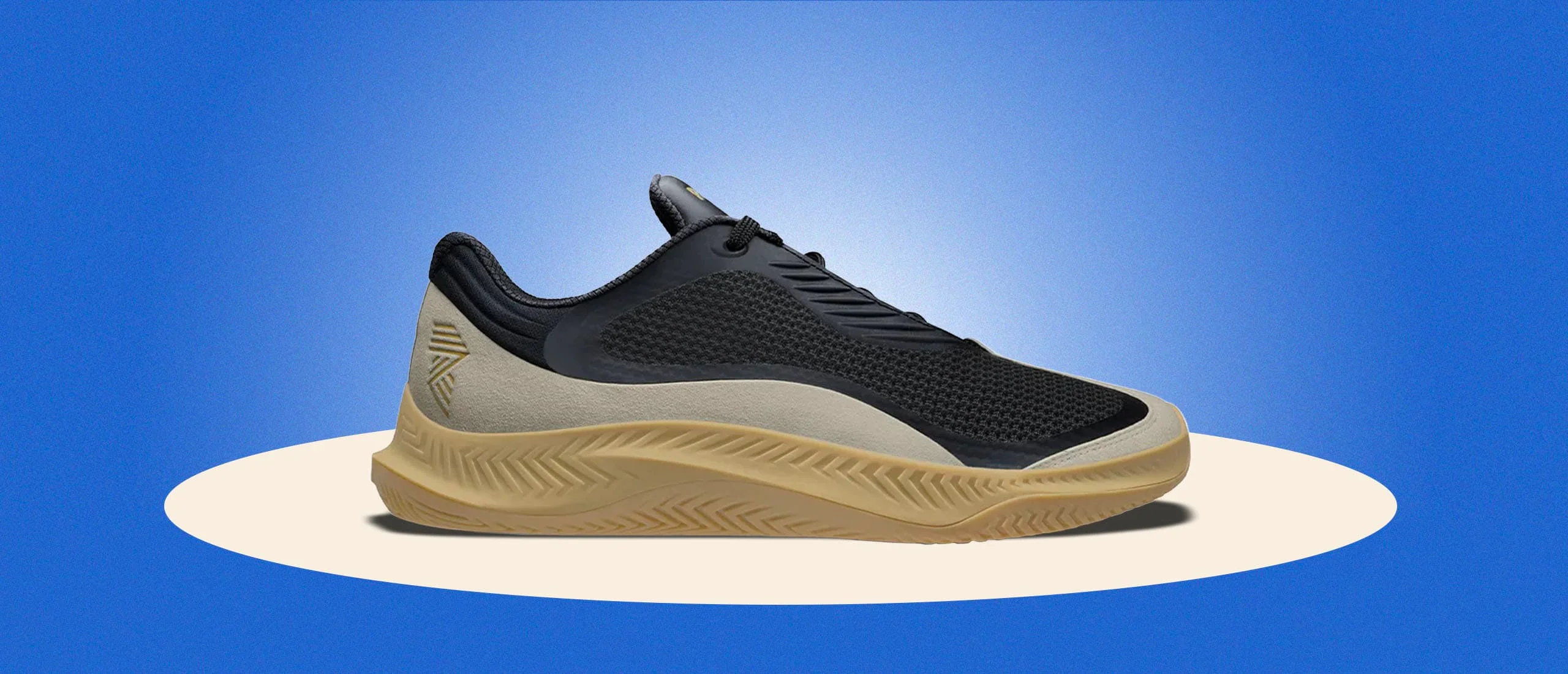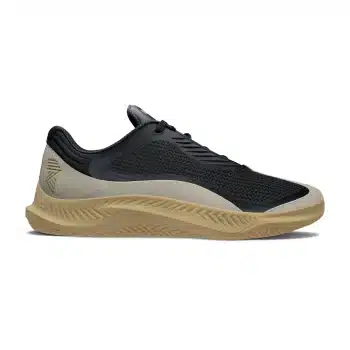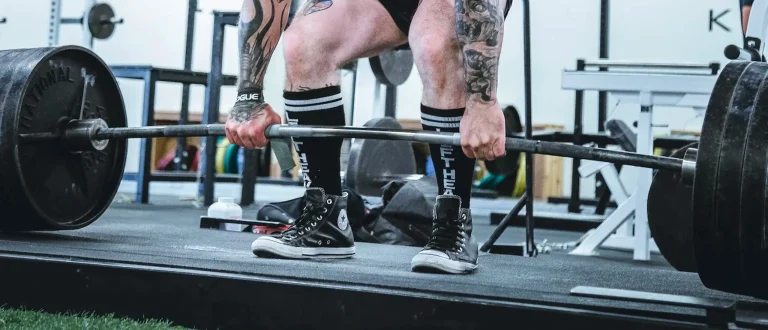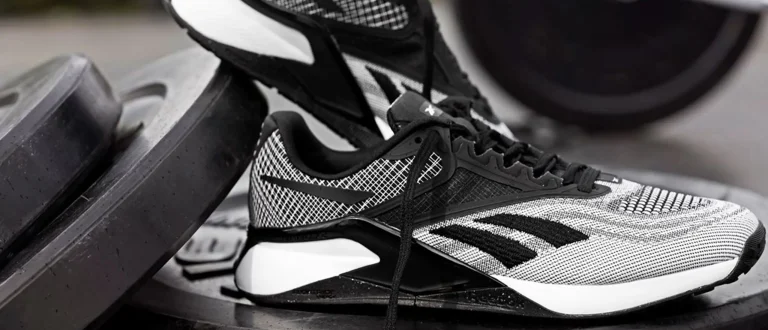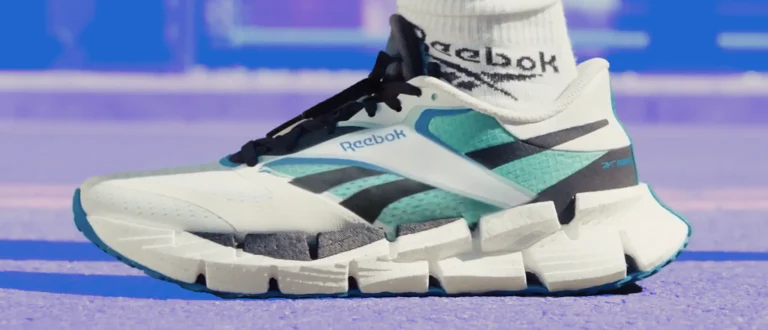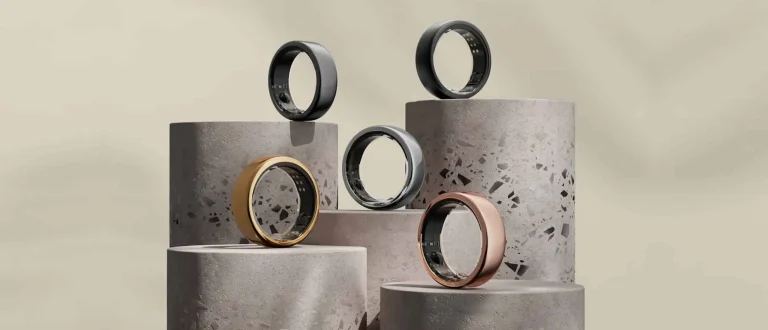Our product recommendations are selected by editors, tested first-hand, or expert-approved. We may earn a commission through links on our site.
In the gym shoe game, R.A.D isn’t Nike or Reebok. It’s not even close to Puma; you can’t compare it to gym apparel startup NoBull. No, R.A.D, launched at the start of 2022, is as small and punchy a brand as you’ll see in performance footwear. And that’s its greatest strength.
While the big brands are trying to figure out how to fit “Engineered to the Exact Specifications of Championship Athletes” (cough, Nike, cough), the people behind R.A.D’s debut ONE sneaker were getting reps in. I worked through a few sessions of cross-training, some heavier weightlifting, and running cardio to see if these indie sneakers really compete with the big boys.
Want more gym shoe recommendations? Check out our guide on the subject. Every product we recommend is tested, reviewed, and compared against the competition.
What Are R.A.D One Sneakers?
R.A.D—or Rally Against Destruction—was founded by Ben Massey, a CrossFit gym owner and former CrossFit Games competitor, and launched on athlete’s feet at the 2022 Wodapalooza CrossFit Festival. The brand defines itself by its performance versatility, commitment to sustainable materials, “drop”-based marketing, and attachment to a number of CrossFit athletes. They’re also our pick for the best overall gym shoe you can buy in our guide to the category.
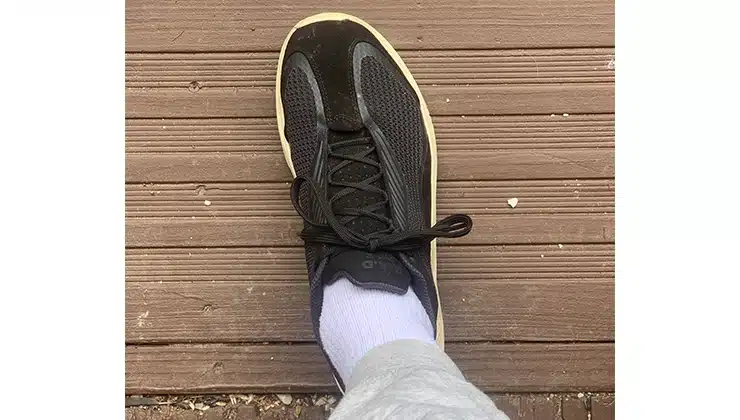
What’s Good About R.A.D One Shoes?
Supports heavy lifting and cardio equally well
For the most part a training shoe is either stable or responsive. Stable is great for weightlifting and exercises that require balance, and responsiveness is necessary for support during activities in which you’re landing on your feet a lot (the most obvious being running cardio). The problem is CrossFit, which these shoes were designed for, often features movements that demand both stability and responsiveness. After 20 miles of outdoor running in the R.A.D Ones, three leg day sessions, and two strength-agility classes I feel confident in saying these shoes can walk and chew gum at the same time.
There’s enough support for comfortable mid-distance running and the mid-foot and heel don’t wiggle or give under heavy loads, either. Critically, the toe box is also wider than most sneakers (almost exactly as wide as the Metcons), which allows for the toes to spread when you are picking up or squatting with heavy weights, providing more balance. On top of that, the grip is tacky, almost like a new basketball shoe, which helps with workouts that require frequent starting and stopping (like suicides or side-to-side agility drills).
Durable construction
The outsole is thicker and a bit harder than other training shoes I’ve reviewed. This means exercises where you’re dragging your toes, the sides of your feet, or your heels won’t wear the shoe down as quickly (admittedly, it’ll take many more months of wear to know just how much tougher the shoes are in this regard). There’s also far less exposed stitching on the shoe, which means exercises and wear that might see the shoe rub against a barbell or brush up against tree on a walk are less likely to result in threading and material failure.
Supremely comfortable day-to-day
In my mind the shoe’s greatest feat is its comfort level. Shoes you can put through three-plate squats are usually not what you’d want to wear on a three-mile run, much less throw on when going to Costco. Yet that’s exactly how I’ve worn the R.A.D Ones thus far.
The body of the shoe is largely a jersey or mesh-like material that provides breathability for intense workouts as well as stretch when you’re running or moving laterally. That stretch can’t be undersold, because the mid-foot and heel are still being asked to support heavy lifting movements, so have to be more rigid than a typical running shoe.
MORE GYM SHOES
What’s Not Good About the R.A.D One Shoes?
Price is on the higher end
For all their performance bonafides, $150 for a shoe from a brand most people have never heard feels like a tough hurdle to get over. Here are the prices of its most direct competition:
Comparing price with no other context isn’t all that useful, and R.A.D are doing interesting things with material sustainability (the foam used in the sole is made partly with sugar cane, for example), but I wouldn’t think poorly of someone for wondering where the extra $20 or so comes from.
“Drop”-based business model
This may be a personal gripe, but the “drop”-based business model is one that I think is better for businesses than it is customers. Popularized by sneaker culture, brands like R.A.D release (“drop”) new shoes every so often to stir up interest in the brand and keep things fresh. For R.A.D, new drops come in the form of new color combos that replace the old ones on the site. The black sneaker I bought for this review, for example, doesn’t seem to be available anymore (a new Miami-themed pack is, though). Again, this isn’t a man-yells-at-clouds moment, but consistency—even concerning something as mundane as color choice—is important to me. Call me boring, but I hope a mainline collection of the sneaker is introduced and kept in stock on the site in the future.
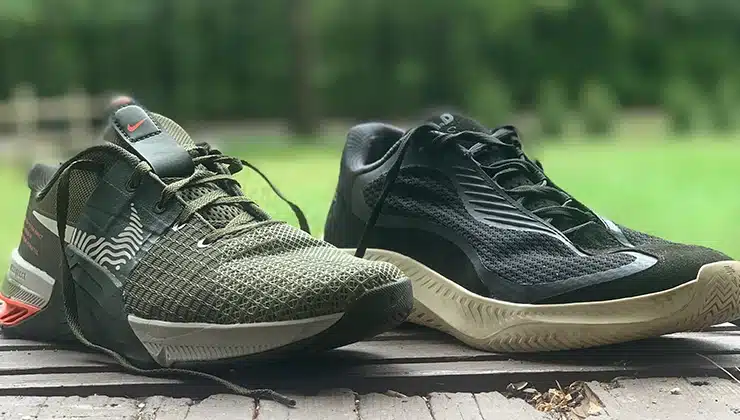
The Experience
Why try an unknown brand?
I usually lift in Metcon 8s, which are probably the most popular cross-training shoe on the market. They provide a great “locked in” feeling during heavy deadlifts and squats, and support front-footed training like sprints and lunges well enough. But they’re extremely uncomfortable to run in for more than a mile or so, which isn’t near far enough for a real cardio workout. I don’t know about you, but I really don’t want to be the guy who brings multiple pairs of shoes to the gym.
That’s why I was hopeful for the R.A.D Ones. The look and shape of the shoe suggests that it is a more comfortable ride than the Metcons, and it was immediately clear that assumption was accurate when pulling them out of the box.
Solid construction
The first thing I do with a new training shoe is see how it bends. Put a hand on the heel and the toe, and push them together. Does the sole bend easily? Where does it bend? With the Metcons, it’s more of a pinch; the shoe is famously stable so from the heel to just below your toes, the shoe does not give a millimeter. The R.A.D Ones bend a little further toward your mid-foot, and offer far more give laterally. This, combined with the cushy looking sole, gave me confidence the shoe would run and lift well.
Running and lifting
I run three times a week, usually for 3 to 5 miles per run. This kind of moderate cardio is not possible wearing the Metcons. I did it for a month straight without foot pain wearing these shoes. I typically go to the gym for a lifting or strength training session three or four times a week, with most sessions demanding a stable sneaker. During squats, I noticed very little difference between them and Metcons (or other shoes I’ve reviewed) other than a slightly higher ride (the sole is a hair thicker). I went through a number of paused squat sets—sitting in the deep squat position for roughly one second before ascending—and there was no wobbling or foot repositioning needed.
The cushioning, comfort, and looks are so nice that I find myself lacing up R.A.D Ones when running errands and walking the dog. I even wore them on a 25-mile bike ride without issue. It’s a performance-minded, tough, and good-looking shoe that isn’t overbranded. That combo is hard to beat.
The Competition
Nike Metcon 8
If we’re splitting the finest hairs imaginable, I’d say a person who is getting shoes exclusively to lift heavy weights in should get Nike’s Metcon sneakers ($130). They ride a bit lower, and the secure feeling is marginally better. But if you incorporate jogs, agility work, or simply want a more versatile shoe, I’d recommend the R.A.D Ones. They’re just more comfortable to wear during more workouts, and in everyday life.
Reebok Nano x2
The Nano x2 sneakers ($135) are the closest big brand training shoe to the R.A.D Ones as far as balance between stability and responsiveness goes. Though our reviewer, a certified personal trainer, said she likely wouldn’t push beyond a couple miles in the x2s, whereas I was able to hit 3-, 4-, and 5-mile runs without issue. Lifting performance wasn’t an problem with either, so we lean toward the R.A.D sneaker, despite the extra $20 or so.
NoBull Trainers
Some people really enjoy a classic flat-footed shoe for weightlifting and training, and NoBulls ($129) are perfect for those people. They’re rigid, take a little breaking in, and very plain-looking, too. Again, though, if you want to get a jog in at the end of your workout I would recommend bringing an extra pair of shoes, or a more versatile shoe.
The Bottom Line
R.A.D are do-it-all trainers. Lift, jog, and run errands to your heart’s content wearing them—unlike the majority of their competition, they’re comfortable and stable enough to do it. The key downside is the price—$150—which is about $20 more than most of its competition.

